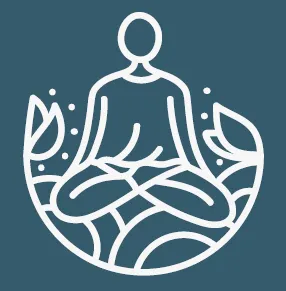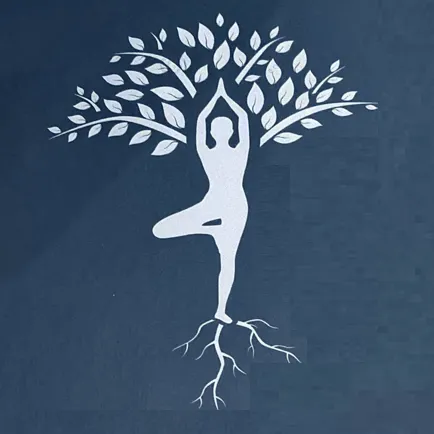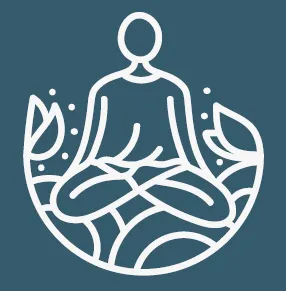Yoga Philosophy
Written by Elke Hottentot

Vedānta: demystifying this ancient text
Vedānta: demystifying this ancient text
Introduction
The word, ‘vedānta’ can be translated as ‘the end of knowledge as ‘veda’ means ‘knowledge[1]. Vedānta’ has a double meaning in that is sometimes used when making reference to the final period of the age of the Vedas; a classical age that brought forth great wisdom in from 1300 to 600 B.J.C, while other times referring to a movement in its own right that began around the 7th to 6th century B.C.
This movement did not have a founder and had a strong oral tradition.[2] It is one of the six darśana, Hindus points of view (literally ‘sights’[3]) or philosophies on life. It is the darśana that has marked Indian philosophy and even Hinduism to a greater extent than any of the other five. Even till today, Vedānta darśana is the system that continues to influence Indian way of life in each and every way. In this paper, ‘vedānta’ will be described as a darśana in its own right.
Vedānta darśana is essentially a critical commentary on the Upanishads, which often were stories with their meaning deeply buried. Whereas, the Upanishads steered away from too great a reliance on the intellect and rather invited silent reflection and immersion and with no apparent need to answers questions, vedānta darśana is, aside from requiring that same stillness and ability to reflect, highly intellectual and its comprehension depends greatly on the ability to think deeply and to answer to questions that dissolve the apparent duality of reality.
Other than the Upanishads, Vedānta darśana also has its roots in the Bhagavad-Gītā and the Brahmasūtra. The latter is the oldest written foundation (300 B.C) of this darśana.[4]
Advaita vedānta
Throughout the ages, three distinct views of vedantic knowledge were put forth, each one being accredited to a sage; the most important being Śankara (788 – 820 B.C). Despite the short 32 years he is assumed to have lived, his influence on Indian philosophy has reached all the way through the ages to the present moment. He created a sub-school of the Vedānta system referred to as advaita vedānta, which translates as non-duality. Other sub-schools are dvaita (dual), expounded by Mahdva and Viśishādvaita (non –dual with qualifications/uniqueness) by Rāmānuja.
‘Advaita’ refers to the identity of the Self as being at the same time atman (the self) and brahman (the Absolute/ultimate reality/source of all). Not surprisingly then, two of the three key principles of Advaita vedānta are atman and brahman. Only Brahman is real according to the Upanishads, yet the material world is seen as real, Adi Shankara explained the anomaly by the concept of this illusionary power of Māyā[5].”, the third principle.. Closely linked, although not considered a key principle, is avidyā, ignorance. For it is ignorance that keeps the illusion or dream of duality alive, and obscures our ability to see that we are one with brahman. Once the veil of māyā has been lifted, one cannot perceive anything but this oneness.
According to Adi Shankara, “Māyā is the complex illusionary power of Brahman which causes the Brahman to be seen as the material world of separate forms. Māyā has two main functions — one is to "hide" Brahman from ordinary human perception, and the other is to present the material world in its (Brahman) place.”[6] That said, one can see that māyā is not just a figment of our imagination, but not completely real either. Māyā is compared with magic, and Brahman with the magician – only he will not be tricked by his own magic.[7]
Siddartha
Let us now briefly return to the subject of non-duality by taking a close look at ‘Siddartha’, a beautiful book written by Herman Hesse, includes a powerful section that might perhaps enable a greater understanding of this concept of non-duality.
“This here," he said playing with it, "is a stone, and will, after a certain time, perhaps turn into soil, and will turn from soil into a plant or animal or human being. In the past, I would have said: This stone is just a stone, it is worthless, it belongs to the world of the maya; but because it might be able to become also a human being and a spirit in the cycle of transformations, therefore I also grant it importance. Thus, I would perhaps have thought in the past. But today I think: this stone is a stone, it is also animal, it is also God, it is also Buddha, I do not venerate and love it because it could turn into this or that, but rather because it is already and always everything— and it is this very fact, that it is a stone, that it appears to me now and today as a stone, this is why I love it and see worth and purpose in each of its veins and cavities, in the yellow, in the gray, in the hardness, in the sound it makes when I knock at it, in the dryness or wetness of its surface. There are stones which feel like oil or soap, and others like leaves, others like sand, and every one is special and prays the Om in its own way, each one is Brahman, but simultaneously and just as much it is a stone, is oily or juicy, and this is this very fact which I like and regard as wonderful and worthy of worship.—But let me speak no more of this. The words are not good for the secret meaning, everything always becomes a bit different, as soon as it is put into words, gets distorted a bit, a bit silly—yes, and this is also very good, and I like it a lot, I also very much agree with this, that this what is one man's treasure and wisdom always sounds like foolishness to another person.” [8]
"This too," spoke Siddhartha, "I do not care very much about. Let the things be illusions or not, after all I would then also be an illusion, and thus they are always like me. This is what makes them so dear and worthy of veneration for me: they are like me. Therefore, I can love them. And this is now a teaching you will laugh about: love, oh Govinda, seems to me to be the most important thing of all. To thoroughly understand the world, to explain it, to despise it, may be the thing great thinkers do. But I'm only interested in being able to love the world, not to despise it, not to hate it and me, to be able to look upon it and me and all beings with love and admiration and great respect."[9]
Just like Siddharta, Śankara did not deny the existence of duality, which at a physical level does exist. That what is fire, is not water (at least not now), and that what is you is not me. Accepting this duality though renders it no longer of any influence, and what remains is oneness; hence, the term ‘non-duality’.
Practice
Advaita vedānta is not only a philosophy; it is a way of living that strives to go beyond most people’s fragmented perception of reality and instead perceive that what already and always was, i.e. our oneness with Brahman. It proposes a four-fold practice comprised of: 1) a burning desire to be liberated, 2) discernment, 3) detachment, and 4) tranquillity. [10]
Rather than practicing detachment, an Advaita vedāntist occupies him or herself entirely with the Self. As such, one’s mental and physical capacities are all directed towards experiencing the Self. This means that a conscious choice is made to only do or say or be that what reveals the Self, so that in the end, only the Self is experienced. One knows one is experiencing only the Self when no more questions arise and only answers remain. This practice enables a form of reverse attachment; things let go of us. For a practitioner then, there is nothing to refuse; only to purify words and actions and ways of being that honour the Self. Perhaps not surprisingly then, advaita vedānta is also referred to as the philosophy of the big ‘yes’.
Three stages mark the ‘internalizaton’ and the realization of Brahman , the first one being to be tuned in (to listen to oneself, teachers and texts of the tradition); the second being intellectual reflection to evict all doubts, and the last one contemplation that allows for the direct apprehension of the truth of the self.[11] This is exactly what Siddharta did towards the end of his spiritual journey, and resulted in Govinda and many others referring to him as an enlightened man.
Finally
This does not meant that an Advaita vedāntist no longer suffers due to, for example, sadness or anger. No, but one is no longer identified with it as a result of which it is no longer nourished with add-on thoughts. This means that there can be both sadness and non-sadness at the same time. The first has its roots in our ego; our mental space; our thoughts, while the second in the Self. By linking the ego and the Self, we enter into the realm of the non-duel. Rather than identifying with the ephemeral deceptively real part of ourselves, we know that all suffering comes and goes. Then, suffering is experienced with the understanding, and ultimately, identity, that there is a never changing, ever lasting Self at the core of our being.
Accepting what is then pores over into accepting oneself and, finally, others. Acceptance breeds peace with oneself, and with others. This allows us to go further into meeting the other, in being there for others.
[1] Vedanta Philosophy. http://www.vedantaberkeley.org/vedanta.htm. May 4 2012.
[2] Sifonios, A. (no year). Philosophy Indienne – Le Vedānta, p. 1.
[3] Wikipedia. http://en.wikipedia.org/wiki/Dar%C5%9Bana, May 4 2012.
[4] Vedanta and Indian culture. http://belurmath.org/vedantaindianculture.htm, May 4 2012.
[5] Wikipedia, http://en.wikipedia.org/wiki/Advaita_Vedanta, May 4 2012.
[6] Advaita Vedanta. http://en.wikipedia.org/wiki/Advaita_Vedanta, May 4 2012.
[7] Idem.
[8] Hesse, H. (1951): The Modern Library, New York, Siddartha, p.121.
[9] Idem.
[10] Freely translated from notes on the Vedanta written by Anoula Sifonios, (no year of publication), p. 5
[11] Idem.






